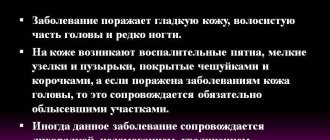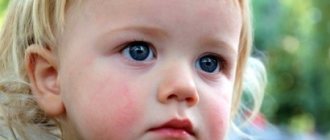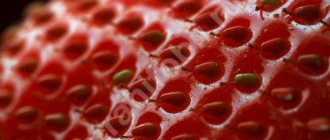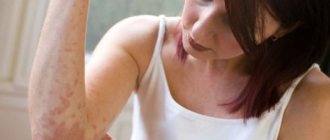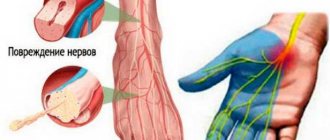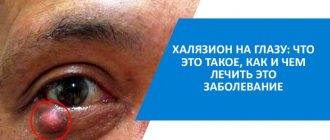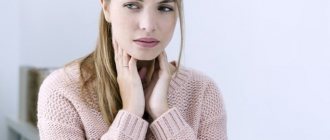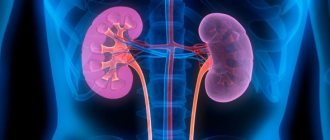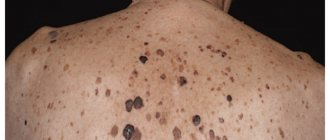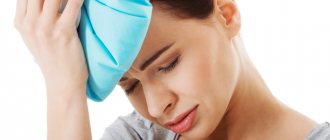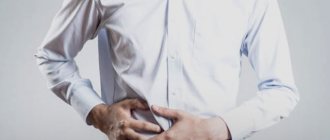- Causes
- Symptoms
- Kinds
- Diagnostics
- Treatment
- Prevention
- In children
- Video
- Main
Lichen is a very large group of skin diseases, the main symptom of which is spots on the skin. The formations can be of different shapes and colors, cause discomfort or not cause subjective sensations, be an aesthetic defect of a particular person or pose a threat to others, such as ringworm, the spots of which are colonies of pathogenic fungi. In contrast, tinea versicolor, more often called eczema, is a non-contagious disease (however, it can seriously complicate a person’s life, since it is accompanied not only by rashes, but also by itching), and is chronic in nature: frequent exacerbations alternate with periods of remission. The disease is caused by internal and external causes, it is difficult to diagnose and treat, and there are no recommendations for prevention that guarantee complete protection. The prerequisites for the development of eczema are laid in childhood , and in the absence of proper and timely treatment, the disease accompanies a person throughout his life.
Varieties and atypical forms
Eczema can appear in a variety of forms. Not only the symptoms and nature of the rash, but also the severity of the disease and the extent of the lesion depend on this or that type of weeping lichen.
In total, medicine knows 9 forms of this disease:
- Microbial. Occurs in areas of chronic inflammation. The microbial subtype of weeping lichen can appear against the background of long-term non-healing scratches, ulcers, abrasions, abrasions, fistulas and other wounds affected by microbes.
- Mycotic. The disease is provoked by an allergic reaction to an acquired fungal infection. This form most often occurs in people against the background of various mycoses, candidiasis or ringworm.
- Dyshidrotic. The disease is caused by strong emotional experiences and chronic stress. This form of weeping lichen has a characteristic localization - the soles of the feet, palms.
- Varicose eczema. It usually appears in older people against the background of venous disease.
- Atopic (atopic dermatitis). It mainly affects the skin of the face, arms, shoulders, chest, back of the knees, and neck.
- Seborrheic. Localized in areas where sebaceous glands are concentrated. Appears, as a rule, against the background of seborrhea. Most often located on the scalp.
- Professional. Refers to allergic types. A skin reaction is provoked by constant contact with any allergen. This form mainly affects production employees whose activities involve the use of chemicals.
- Children's room. Appears against a background of weakened immunity, after an illness - acute respiratory viral infection or influenza. Usually localized on the face.
- True (idiopathic). A characteristic feature of the true form is the acute onset of the disease, imperceptibly flowing into a chronic form. Patients with this type of weeping lichen periodically suffer from relapses.
Common signs of lichen in humans
First of all, it is worth noting that lichen can occur both openly and in latent (hidden) form.
Ringworm can appear only on a local area of the body (most often on the scalp, genitals) or cover the patient’s entire skin.
Regardless of the type of pathogen, the location of the infection, or the individual characteristics of the patient, there are symptoms of lichen that are common to all. These include:
- Pigmentation disorders. The affected skin may become darker or lighter, or appear bright red, brown, or pink.
- Most often, peeling is observed in the area of pigmentation changes, and sometimes the appearance of bubbles filled with clear liquid.
- All changes in the skin are accompanied by severe, unbearable itching.
Common to all types of lichen are preventive measures to prevent infection. To protect yourself from an unpleasant and unsightly illness, people should:
- Strictly observe basic rules of personal hygiene. You can become infected with lichen through someone else's clothes, shoes or hygiene items.
- Do not touch unfamiliar animals or animals with obvious signs of illness.
- Children attending kindergartens or schools, or other groups of children, should be regularly shown to dermatologists.
Ringworm is an unpleasant disease, but it can be completely cured. There are even some types of lichen that do not require treatment and go away on their own.
Today the most common are:
- Pityriasis rosea or Gibert's disease.
- Pityriasis versicolor, also known as “colored” or “variegated”.
- Scaly lichen, popularly known as “fish scale” or psoriasis.
- Ringworm (also known as “ringworm” or trichophytosis).
- Microsporia. A highly contagious form that is often confused with ringworm.
- Ringworm, more familiar to most as eczema.
- Shingles, sometimes called herpes.
Each type is caused by a specific pathogen and is subject to strictly defined treatment. The consequence of untreated lichen can be permanently disfigured skin or lost hair.
Causes
The root causes of the formation of weeping lichen are still completely unknown. Medicine is inclined to believe that this is largely an allergic disease that occurs in conditions of weakened immunity.
People suffering from diabetes mellitus, vegetative-vascular dystonia, diseases of the stomach and thyroid gland are predisposed to eczema. Lichen versicolor often appears in patients suffering from mental disorders. This disease is also considered hereditary.
The cause of the disease directly affects the form of its manifestation. For example, a wound that does not heal or is constantly injured becomes a fundamental factor for the occurrence of microbial eczema. Allergy sufferers are more likely to experience the professional or atopic form of lichen lichen.
Lichen planus
This variety is considered a form that is not transmitted. Older women are more likely to get sick. Development is caused by stress, chronic diseases, and taking certain medications.
In the photo of a patient with lichen, red papules are visible, which later turn blue. They appear on the arms, legs, sides of the body, genitals, and on the oral mucosa.
In treatment, medications containing calcium and sodium have the greatest effect. Antibiotics, sedatives, and ointments can be used.
Symptoms
Symptoms of weeping lichen depend on the subtype of the disease.
But there are a number of common characteristics for all types of eczema:
- redness and thickening of the skin;
- severe itching, irritation;
- swelling of the affected area;
- rashes, small blisters that open and become covered with hemorrhagic or serous scabs;
- the skin becomes wet, peels, cracks, small wounds appear;
- bluish-plum spots may appear.
As a rule, with eczema, there is a lot of scratching on the damaged area of the patient’s skin. Patients suffer from severe itching, which increases at night and after contact with water. Sometimes the skin itches so much that people cannot even sleep normally. During an exacerbation, a person may have a fever. After the onset of remission, the skin at the site of erosion becomes dry and inelastic. There are cracks left on it.
The course of true eczema is divided into four stages. First, the skin becomes covered with tiny blisters, which quickly burst. Foci of erosion form in this zone. Then the skin begins to get wet and pain appears. After some time, the affected areas become covered with a solid yellow crust.
Microbial eczema differs from other forms of weeping lichen by its clear localization in the injured area, through which the pathogenic microflora has penetrated.
Symptoms
Eczema does not spare either adults or children, greatly worsening the general condition, spoiling the nerves and appearance.
Ringworm, regardless of its type, has a number of common manifestations:
- exhausting itching and skin irritation that does not go away even at night (if water gets into the lesions, the symptoms intensify even more);
- as a result of injury from scratching, the skin swells, becomes hyperemic and thickens; the patient suffers from insomnia;
- the body temperature of a sick person is often subfebrile (38-38.5 0 C);
- following the itching, a rash appears in the form of small bubbles with transparent contents, which merge into vesicles and then open, forming erosive areas;
- soreness and weeping appear on the skin, in their place significant yellow crusts, cracks, peeling are formed and an unpleasant burning sensation appears;
- Often erosions are accompanied by a microbial infection, foci of inflammation and pus appear;
- The peculiarity of its distribution in adults is a pair of lesions on the skin of the neck, elbows, forearms, knees, ankles and feet. In children, it mainly affects the chin, chest, limbs and buttocks.
Important! In this case, only an infectious disease specialist or a dermatologist can correctly establish a diagnosis and prescribe adequate treatment. The sooner you seek help from a qualified professional, the sooner you can prevent the further spread of eczema.
Photo of weeping lichen: what it looks like
Photographs of patients show that different forms of eczema look different. The professional variety cannot be confused with seborrheic, and the microbial variety with the true one.
Seborrheic form of eczema
True eczema
Microbial eczema
Occupational eczema
Devergie's disease
Some experts consider this disease to be a type of pityriasis versicolor that affects the scalp, while others classify it as a separate disease.
The causative agent of the disease has not been identified. It is only known that the pathology is based on a process as a result of which follicular plugs are formed in the epidermis (outer layer of skin). The skin around them becomes moderately inflamed, and the plugs themselves look very similar to yellow or white asbestos flakes. After a few years or months (if the disease is not treated), they develop into small red or yellow papules (rashes) containing vellus hair. Papules have a sharp scaly top. If you run your hand over the damaged skin, the sensation will be reminiscent of stroking a grater. Gradually, plaques can move from the scalp to the body, especially to those places where the skin stretches, rubs, and sweats. Over time, the papules enlarge and merge, forming red dense plaques with white peeling in the middle. Soft “satellites” form around them. If the plaques are placed on the palms, the skin in the places where the scales separate may crack deeply. Externally, the plaques are similar to psoriasis, therefore, laboratory testing is required to establish an accurate diagnosis.
Treatment of Devergie's disease
The patient is hospitalized only in very severe cases. Usually the following are prescribed for treatment:
- Softening creams with vitamins A, B2, B12, E, etc.
- Corticosteroids.
- Ultraviolet procedures.
- Sea baths.
- A set of physical procedures, sometimes photochemotherapy.
Despite the fact that treatment for Devergie's disease can take several years, a complete cure is possible.
Treatment of weeping lichen
The main treatment of eczema is aimed primarily at eliminating the cause and factors that provoke the disease. For an allergic type of disease, the patient is prescribed a number of antihistamines, vitamins, and immunocorrectors. If the disease manifests itself in severe form, the doctor supplements the therapy with corticosteroid hormonal medications. Often, doctors, depending on the patient’s complaints and the nature of the lesion, prescribe various anti-inflammatory drugs, courses of physiotherapy, acupuncture and even psychotherapy if the disease is caused by nervous tension.
If you notice signs of eczema, consult a doctor!
Ointments
Ointments for the treatment of weeping lichen are used, as a rule, in complex therapy. Among the non-hormonal remedies for relieving itching and swelling, zinc-based drugs are prescribed: Desitin, Tsinadol. Often they use naphthalene and ichthyol-containing creams, sulfur ointment, and Dermalex. For seborrheic form, 2% salicylic acid is often prescribed.
All these ointments are inexpensive, but at the same time they perfectly relieve inflammation and soothe itching. In addition, ichthyol and salicylic agents also have a pronounced anti-inflammatory effect.
Of the hormonal ointments, dermatologists prescribe: “Flucinar”, “Diprosalik” or its analogue “Belosalik”, “Trimistin” and “Hydrocortisone” cream.
Never use hormonal ointments without consulting a doctor.
Pills
For the treatment of patients suffering from tinea versicolor, drugs of various spectrums of action are widely used:
- antihistamines - “Zirtec”, “Telfast”, “Cetrin”, “Kestin”, “Claritin”, “Loratadine”, “Erius”;
- antibiotics - “Gentamicin”, “Tetracycline”, “Erythromycin”, “Ampicillin”, “Lincomycin”;
- vitamins - groups “B”, “A”, “C”, “Perfectil”, “Aevit”.
Antihistamines relieve swelling of the skin, have an antiallergic effect, a sedative, antispastic effect, eliminate itching and irritation. Antihistamines are prescribed to absolutely all patients, regardless of the form of the disease.
Antibiotics are prescribed for microbial types of lichen and in case of bacterial infection. As a rule, such therapy is considered justified when symptoms of complications appear, a high temperature rises and the patient’s condition worsens.
Only a doctor should make a decision about prescribing medications. If you are prescribed an antibiotic and you think it is not needed, consult another specialist, but do not cancel the drug based only on your opinion.
Shampoos
If the scalp is affected by eczema, then specialized shampoos are indispensable. Shampoos such as “Skin-Cap”, “Sebozol”, “Keto+”, “Cinovit”, “Nizoral” are very helpful as an adjuvant in complex treatment. Some of them not only relieve itching and soothe the skin, but also have an anti-inflammatory effect, promote the healing of wounds and microtraumas from scratching.
Diet
In addition to drug treatment, patients with weeping lichen must be prescribed a gentle diet.
A person is allowed to eat:
- dairy products;
- porridge;
- greens, vegetables;
- protein dishes.
It is strictly forbidden to eat during treatment:
- alcoholic products;
- fatty and fried foods;
- fast food.
In addition, the patient should drink a lot. At least 1.5-2 liters of water per day. Water will help quickly remove toxins from the body and avoid dehydration.
Treatment with folk remedies at home
Treatment with folk remedies, as a rule, is resorted to by people who have already tried a lot of medications. Wanting to speed up recovery, they are looking for a way to get rid of the disease on their own, trying everything. There is no need to do this. There are time-tested folk remedies, which are sometimes prescribed even by doctors themselves.
If you have not yet been to a dermatologist, do not start self-medication. Visit a doctor! Be sure to consult with a specialist about the admissibility of certain traditional medicine methods before using them.
Traditional recipes for eczema:
- If you have affected skin on your eyelids or face, prepare a decoction of birch buds. Fill a glass of dry herb with the same volume of boiling water, place on low heat and boil for 15 minutes. After the potion has cooled, soak gauze in it and apply to the sore eyelid for 15 minutes. Repeat the procedure daily 3 times a day until symptoms disappear.
- Pick fresh elderberry leaves. Rinse them well in cool running water. Examine the leaves carefully. Are there any insects or parasites left on them? Apply leaves to problem areas.
- Cut off a Kalanchoe leaf, prepare a thick gauze bandage, and squeeze all the juice onto it. Apply the compress to the painful area and do not remove until all the juice is absorbed into the skin and the bandage is dry. Do this procedure every day, 2 times a day until complete recovery. The bandage can be worn without a break for no more than 4 hours.
- A regular potato mask works well. The root vegetable is grated, the juice is drained, and the pulp is placed on the eczema for 20-30 minutes. This cosmetic procedure should be carried out daily, 2 times a day.
- Prepare a decoction of equal portions of calendula, chamomile and sage. Pour approximately 20-30 g of herb into a couple of glasses of boiling water. Let it brew for 20 minutes. Then soak a gauze bandage in the potion and apply it to your face. The compress should be kept on the skin for no more than 20-30 minutes. The procedure can be repeated up to 2-3 times a day.
Recommendations
During the period of exacerbation of weeping lichen, a person should avoid contact of the affected area with water. You need to provide yourself with the most comfortable psychological atmosphere, lead a healthy lifestyle, walk more, walk more and eat right.
Those suffering from an allergic form of eczema are advised to use only hypoallergenic cosmetics and personal care products. Also, all patients should avoid strong sunlight.
Treatment with folk remedies
You can learn how to cure eczema from traditional medicine recipes that have survived to this day. An effective ointment, which includes 20 g of burdock leaves, chamomile flowers, coffin root, and fireweed herb. All these components are used in dried form. Water is added to this mixture and the herbs are simmered over low heat. Later you need to add a tablespoon of oil to them. Once the mixture has thickened enough, it is filtered and mixed halfway with glycerin.
You can also prepare an ordinary decoction of burdock root for external use, for the preparation of which you need to add 15 g of crushed dry burdock root to one glass of water and boil for ten minutes. Compresses for the affected areas are also made from fresh strawberries, previously well crushed.
Traditional medicine also recommends decoctions and infusions for internal use. In this case, you can undergo treatment with a decoction of dead nettle flowers, which is consumed several times a day half an hour before meals. Similarly, you can take a decoction of wheatgrass root and verbena tea. It is also recommended to drink tea from dried viburnum fruits, and also take 2 ml of sea buckthorn oil for several days.
Prevention
If the disease has progressed to the chronic stage, as well as during the period of remission, you should monitor your psycho-emotional state and try to avoid stress. If allergic forms are present, it is necessary to exclude allergens from contact. In the case of a seborrheic or mycotic type of illness, it is important to eliminate the underlying disease - seborrhea, mycosis, pyoderma.
People suffering from tinea versicolor should avoid tight, breathable clothing made from synthetic fabrics and try not to injure or subject excessive friction to already inflamed skin.
Diagnostics
In order to finally verify the correctness of the diagnosis, it is necessary to undergo the most complete examination. What doctors will offer you:
- individual medical examination and medical history (allows you to find out genetics, the degree of damage, the presence of chronic diseases and allergies, and assess the general condition of the patient);
- a general blood test (with special attention to ESR, leukocytes and eosinophils);
- analysis of exudate from the erosive surface and scraping of epithelial cells for examination under a microscope;
- allergy test study.
We recommend! Pay attention to the preliminary preparation before visiting the doctor and taking tests. Try not to use any medications or hygiene products at least on the day of your visit, otherwise you may get an unreliable result.
Features in children
As a rule, eczema in early childhood occurs to a greater extent due to a genetic predisposition. Ringworm may appear in a baby if, during pregnancy, his mother suffered complications, suffered from infectious diseases, or suffered from diabetes mellitus and hepatocholecystitis.
Eczema manifests itself in children in the same way as in adults. A child can catch any form known to medicine. The symptoms of a baby are practically no different from those of older ones. The only thing is that children experience eczema much more restlessly and problematically than adults. However, this is not surprising. After all, even mature people have difficulty coping with the itching of the skin that occurs with this disease. In addition, for children this disease is more dangerous due to complications due to constant scratching of the affected areas, dirt and germs getting into them.
Risk of complications
This disease is not life-threatening, but if it is not treated in time, serious complications are possible. When weeping lichen, a person develops open wounds that are highly likely to become infected. In this case, the patient develops purulent lesions and viral warts on the skin. As a rule, with a complicated form of the disease, the wound begins to smell bad, which causes severe discomfort to the person. In children, eczema in its advanced form can cause slow growth.
During pregnancy
Eczema in pregnant women is not uncommon. After all, during the period of preparation for motherhood, a woman’s immunity often decreases, hormonal changes occur, and the thyroid gland malfunctions. The disease manifests itself in the expectant mother in the same way as in ordinary people. But it can not be treated with all the medications that are usually prescribed to non-pregnant women.
Remember, if you are an expectant mother, only a dermatologist should select and prescribe a course of medications for you. Be sure to consult your gynecologist about prescribed medications. Be especially careful with hormonal medications. If they are prescribed to you, consult with another doctor.
Eczema in a pregnant woman does not have any negative effect on the fetus. Only the nervous state of the expectant mother, her discomfort and anxiety about this can affect the baby’s calmness.
Recommendations for a quick recovery and disease prevention
During the period of treatment, as well as remission, you need to take care of your diet. Diet can work wonders. You don’t have to starve yourself; you just have to exclude allergens from your diet:
- containing artificial flavors and colors;
- sweet carbonated drinks;
- confectionery;
- chocolate, coffee and cocoa;
- eggs;
- seafood;
- seasonings and spices;
- citrus;
- red berries;
- alcohol.
Diversify your diet with various cereals, vegetables and herbs. It is preferable to consume meat and fish boiled or stewed, taking into account their fat content. Fermented milk products are welcome. It is important to maintain a drinking regime of 25 ml per kilogram of body weight of clean water (excluding other liquids).
Preventive measures are aimed at preventing allergic effects, improving immunity, maintaining personal hygiene, safe behavior and avoiding stress.
Forecast
Unfortunately, the prognosis for people suffering from eczema is not very good. This is especially true for seborrheic, atopic and true forms of the disease. These types of weeping lichen can be stopped if a timely and correct course of treatment is prescribed. But, as a rule, in most patients the disease becomes chronic, and the person lives with it all his life. Periodically, the disease worsens, then remission occurs again. How long the exacerbation phase and the period of “hibernation” of eczema will last largely depends on the patient himself. If a person leads a healthy lifestyle, plays sports, monitors his physical condition and promptly begins treatment at the first signs of exacerbation, then eczema may not manifest itself for many years.
Bottom line - tips
To avoid having to suffer from such an unpleasant disease as eczema, and even more so to prevent a relapse of the disease, if it did happen and you had to get sick, you need to:
- Try not to contact with infected patients;
- Don't get nervous over trifles;
- Eat properly;
- Lead a healthy lifestyle;
- Maintain hygiene;
- Treat infectious diseases in a timely manner;
- Do not self-medicate, especially when the diagnosis has not been established;
- Follow all doctor's recommendations.
The most important thing is not to skimp on your health, that is, not to give preference to analogues of the drug prescribed by the doctor, just because its cost is lower. If for some reason the drug is not available in the pharmacy, before choosing a similar drug, it is better to first consult with your doctor.
About the treatment of weeping lichen in the video:
Psoriasis
Psoriasis, scaly lichen or “fish skin” is a non-infectious disease that affects the skin of men and women on the elbows, knees, and large joints. However, it has been noticed that today psoriasis can affect soft tissues, nails, feet, palms and any other part of the body.
The age of the sick also varies. If previously scaly lichen affected people 20-40 years old, today it is diagnosed even in teenagers.
Since the exact causative agent of the disease is unknown, psoriasis is classified as lichen because of its appearance: silvery, scaly spots that resemble lichen.
The causative agent of scaly lichen, symptoms
The causative agent is unknown. There are many diverse theories, each of which has its own observations, but none of the theories has been fully proven.
Most often, red and white bubbles the size of a pinhead appear on the elbows, knees, and hair. Gradually they grow into plaques and increase in size. The pattern of the affected skin becomes like a topographic map. The area affected by plaques resembles fish scales, which is why the disease got its popular name. Later, the rash may spread to any other areas of the skin. Primary rashes or exacerbation of the disease may be accompanied by severe burning, fever, and general malaise.
In the first stage, when the blisters appear and grow, any damage to the skin (such as a prick or sunburn) can cause the rash to increase dramatically.
In the next, stationary period, the amount of rash does not increase, but peeling sharply increases. During this period, the skin often changes color.
The third stage is the disappearance of external symptoms. The itching and burning sensation may persist for months. Sometimes psoriasis affects the joints. This complication is called psoriatic arthritis. Patients feel pain in the interphalangeal joints, sacrum, and spine. The affected joints swell and stop moving normally. Lack of treatment can lead to systematic dislocations, joint deformities, and complete disability.
Treatment of psoriasis
Today there are no specific methods for making a diagnosis. If blood tests show autoimmune, rheumatic or inflammatory conditions, and specific rashes are visible on the skin, the doctor should order a biopsy.
Today, more than 20 methods of treating psoriasis have been developed, none of which can guarantee a quick and complete cure. Treatment depends on the phase of the disease and the location of the lesions.
- At the first stage, injections of vitamins, sensitizers or histamines are practiced.
- At the same time, corticosteroids and sedatives are prescribed.
- At the stationary stage, injections of staphylococcal antitoxins, autohemotherapy, and ultraviolet radiation are often recommended.
- Severe forms can be cured with plasmapheresis and cytostatics.
Currently, specialists have learned to use various techniques to alleviate the patient’s condition, keeping the disease in a stationary stage.
What should you avoid if you have psoriasis?
Most dermatologists are inclined to believe that the source of the disease may be immunity disorders that develop into very slow allergic reactions. Based on this opinion, patients with psoriasis should:
- Avoid nervous, mental and nervous stress.
- With the help of specialists, eliminate possible psychosomatic manifestations.
- Avoid contact with aggressive substances.
- Protect your hands from injuries, including microscopic ones, during physical work.
- Check regularly with an endocrinologist.
Timely treatment and compliance with all precautions can slow down or even stop the development of the disease for many years.
Read more about psoriasis here: Psoriasis: photos, symptoms, treatment
Piedra (nodular) lichen
With lichen nodosum, the hair is affected and the following symptoms occur:
- Dense white round or oval nodules appear on the surface of the hair, covering the hair in the form of a muff;
- Hair can stick together, forming tufts;
- When bending such hair, a characteristic crunch is heard, which is caused by the destruction of a dense colony of the fungus.
The most effective method of treatment is shaving off the affected hair, after which the disease recedes. If this method is not suitable, then you need to wash your hair daily with a solution of mercury dichloride 1:1000 and comb out the knots with a fine comb.
Photo of piedra:
If you have signs of any of the listed diseases, you should consult a dermatologist.
